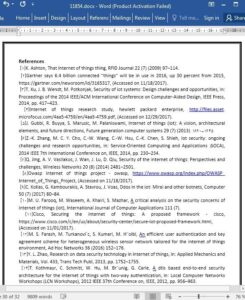Abstract
With the proliferation in the quantity and types of devices that may be included in an Internet of Things (IoT) ecosystem, particularly in the context of a smart home, it is essential to provide mechanisms to deal with the heterogeneity which such devices encompass. Variations can occur in data formats, frequency of operation, or type of communication protocols supported. The ability to support integration between sensors using a “hub” has become central to address many of these issues. The implementation of such a hub can provide both the ability to act as an aggregator for various sensors, and also limit an attacker’s visibility into locally provisioned sensing capability. This paper introduces EclipseIoT, an adaptive hub which uses dynamically loadable add-on modules to communicate with diverse IoT devices, provides policy-based access control, limits exposure of local IoT devices through cloaking, and offers a canary-function based capability to monitor attack behaviours. Its architecture and implementation are discussed, along with its use within a smart home testbed consisting of commercially available devices such as Phillips Hue Bridge, Samsung Smart Things Hub, TP-Link Smart Plug, and TP-Link Smart Camera. The effectiveness of EclipseIoT is further evaluated by simulating various attacks such as Address Resolution Protocol (ARP) spoofing, Media Access Control (MAC) address spoofing, Man-In-The-Middle (MITM), port scanning, capturing handshakes, sniffing, and Denial of Service (DoS). It is demonstrated that direct attacks upon EclipseIoT components are mitigated due to the security techniques being used.
1. Introduction
The Internet of Things (IoT) is the system of interconnected electronic devices embedded with software, sensors, actuators, and network connectivity which enable them to connect and exchange data [1]. IoT devices such as smart and wearable devices, home appliances, and alarm and camera systems provide various functionalities which automate and support our daily activities and needs. For instance, smart fitness trackers such as Fitbit allow users to track their physical movements in order to measure and set personal fitness goals. However, IoT devices are not only used in domestic environments, but are also employed in larger networks such as Critical National Infrastructures (CNI). These include concepts that may be necessary for a country to function and upon which our daily life depends on, such as smart cities, intelligent transport, smart grids, and our health care systems.
7. Conclusion
This paper introduces EclipseIoT, a hub which aims to address IoT heterogeneity, as well as enhancing the overall security of a smart environment. The main components of EclipseIoT are both a gateway and a policy sever. The gateway is capable of communicating with each device whilst also allowing users to access their devices over a secure communications channel, addressing the heterogeneity of the IoT ecosystem. Simultaneously, the policy server maintains accountability of such access. Further mechanisms such as authentication, AES256 algorithm, sub-network configuration, and canary functions also enhance the overall security.











